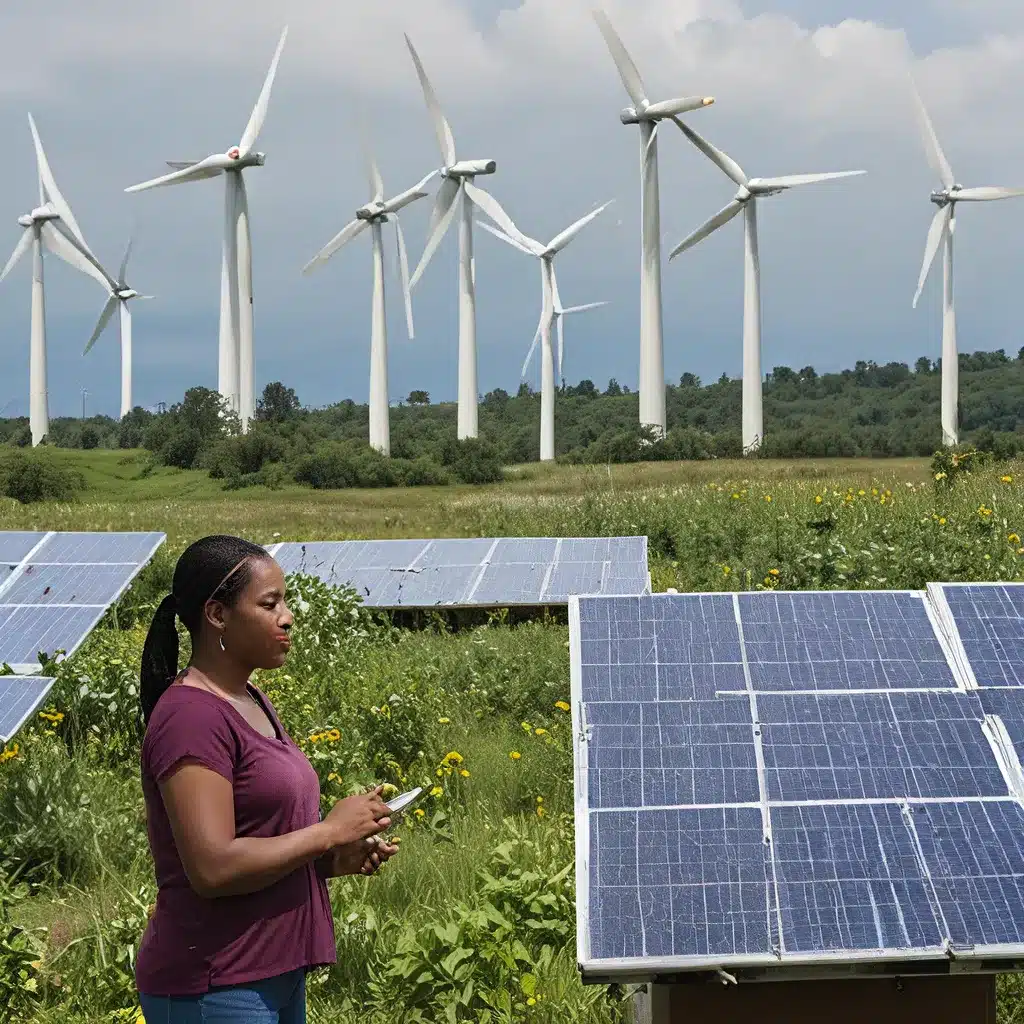
As an advocate for renewable energy solutions, I’m deeply passionate about the intersection of clean energy and environmental justice. It’s a topic that’s been weighing heavily on my mind, and I’m eager to share my thoughts and insights with you.
Unraveling the Complexities of Renewable Energy and Environmental Justice
The environmental justice movement has long been intertwined with the push for renewable energy. At its core, environmental justice is about ensuring that the burdens and benefits of environmental policies and actions are equitably distributed across all communities, regardless of their socioeconomic status or demographic makeup. This means that the communities that have historically borne the brunt of environmental degradation and pollution shouldn’t be left behind as we transition to a cleaner, more sustainable future.
Unfortunately, that’s often easier said than done. The reality is that the shift to renewable energy can sometimes exacerbate existing inequalities if we’re not intentional about addressing them. Gentrification, for instance, is a real concern in many urban areas where the influx of new renewable energy infrastructure and clean development can drive up property values and displace lower-income residents. It’s a complex issue that requires nuanced solutions.
But I’m not here to paint a bleak picture. In fact, I’m optimistic about the progress we’re making in aligning renewable energy and environmental justice. We’re seeing innovative approaches and collaborative problem-solving that are promising signs of a more equitable energy future. Let me share a few examples that have caught my attention.
Equitable Development: A Pathway to Sustainable Communities
One of the most promising frameworks for bridging the gap between renewable energy and environmental justice is equitable development. This place-based approach focuses on meeting the needs of underserved communities through policies and programs that reduce disparities while fostering healthy, vibrant neighborhoods.
The Environmental Protection Agency (EPA) has been a champion of equitable development, recognizing it as an effective way to create strong, livable communities. This approach goes beyond simply installing renewable energy infrastructure; it’s about empowering local residents, supporting collaborative problem-solving, and making a visible difference in communities that have historically been underserved and overburdened.
The ReGenesis Project in Spartanburg, South Carolina, is a shining example of equitable development in action. In the late 1990s, community leader Harold Mitchell Jr. linked health concerns in the Arkwright and Forest Park neighborhoods to pollution in the area. He formed an organization called ReGenesis to represent the community’s interests in cleaning up contaminated and abandoned properties, as well as revitalizing the surrounding area. Through collaborative efforts, ReGenesis has leveraged a $20,000 EPA grant into $270 million in community reinvestment, addressing past environmental injustices and creating a more sustainable future for the residents.
Another inspiring case is the Fruitvale Transit Village in Oakland, California. In the 1990s, the Bay Area Rapid Transit Authority (BART) had the option of advancing a construction proposal that lacked community support or working with residents of the Fruitvale District to devise a plan for the area. The Fruitvale community, with the support of the Unity Council, rejected BART’s proposal for a multi-level parking garage, opting instead for a transit-oriented development that would better connect the community. The outcome is a vibrant, sustainable neighborhood that serves as a reminder that community engagement and collaboration are essential for creating truly equitable solutions.
Regulatory Approaches to Advancing Environmental Justice
While innovative community-driven initiatives are crucial, we also need to address the systemic barriers that have perpetuated environmental injustices. This is where policy and regulation come into play.
The California Public Utilities Commission (CPUC) has taken a proactive approach with its Environmental and Social Justice (ESJ) Action Plan. This comprehensive framework aims to “ensure that the benefits of clean energy programs reach the most disadvantaged communities and prioritize the needs of vulnerable populations.” By incorporating environmental justice principles into their decision-making processes, the CPUC is working to ensure that the transition to renewable energy doesn’t leave anyone behind.
Similarly, the work of organizations like GRID Alternatives has been instrumental in shaping policies that expand the benefits of clean energy to underserved communities. Through their policy leadership efforts, GRID has influenced more than 30 legislative bills, regulatory proceedings, research efforts, and program initiatives across the country, ensuring that the shift to a clean energy economy is truly equitable.
The Road Ahead: Challenges and Opportunities
As we continue to navigate the complexities of renewable energy and environmental justice, there are certainly challenges that lie ahead. Overcoming issues like gentrification, ensuring meaningful community engagement, and addressing the historical legacies of environmental racism will require sustained effort and collaboration.
But I’m hopeful that we’re moving in the right direction. With policymakers, community leaders, and renewable energy advocates working together, I believe we can create a future where the benefits of clean energy are accessible to all, and where environmental justice is truly at the forefront of our priorities.
One area I’m particularly excited about is the potential of innovative financing models to support equitable renewable energy deployment. By exploring approaches like community-owned solar, on-bill financing, and targeted incentives, we can make clean energy more accessible to low-income households and underserved communities.
I also see great promise in the growing emphasis on interdisciplinary collaboration. As we’ve seen with the Fruitvale Transit Village and the ReGenesis Project, bringing together diverse stakeholders – from environmental justice advocates to urban planners to renewable energy experts – can lead to truly transformative solutions.
Of course, the work is far from over. There will be setbacks and challenges along the way, and we’ll need to remain vigilant and adaptable. But I’m confident that by continuing to explore renewable energy solutions through the lens of environmental justice, we can build a more equitable and sustainable future for all.

